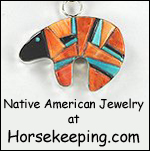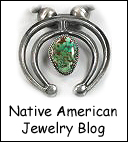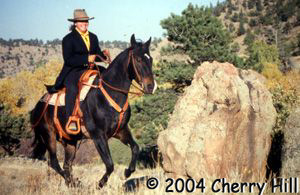Archive for the ‘Feeding and Nutrition’ Category
Horses Eat Snow but Need Water in the Winter
Posted in Feeding and Nutrition, Horsekeeping Almanac, Horsekeeping on a Small Acreage, Water, tagged dehydration, equine, health care, horse eating snow, horse water, horsekeeping, interdental space, management, nutrition, winter water on March 3, 2012| Leave a Comment »
Scarce Hay This Winter – Don’t be Tempted to Use Moldy Hay
Posted in 101 Horsekeeping Tips, Alfalfa Hay, DVDs, Feeding and Nutrition, Grass Hay, tagged equine, hay, hay for horses, health care, horse care, horsekeeping, management, moldy hay, nutrition on December 21, 2011| Leave a Comment »
Friends and family around the country tell me how scarce and pricey hay is this winter. It seems like every year one section of the country has a drought or flood or something that affects or even wipes out the hay crop.
Even though good hay might be tough to find in your area, don’t be tempted to feed moldy hay to your horses.
Salt and Minerals for Horses
Posted in Feeding and Nutrition, tagged equine, health care, horsekeeping, management, minerals, minral block, nutrition, salt, salt block on June 2, 2011| 5 Comments »
Horses should have access to salt at all times. I provide each of my horses with two salt blocks. One is a plain white salt block that is simply table salt; sodium chloride. The other is a calcium/phosphorus trace mineral salt block. It is sometimes called a 12:12 block because it contains 12% calcium and 12% phosphorus or an equal ratio of calcium to phosphorus, which is good for most adult horses.
Is my Quarter Horse Mare obese?
Posted in Alfalfa Hay, Exercise, Feeding and Nutrition, Weight, tagged equine, exercises, fitness, health care, horse care, horse weight, horsekeeping, management, nutrition, obese horse, weight tape on June 1, 2011| Leave a Comment »
Hi Cherry
I have a, well, almost 3 year old Quarter Horse mare. Last time I weighed her she was about 800 pounds or so. She is a small girl, about 13 hands. The lady who feeds her I think is feeding her too much (a flake of alfalfa in the morning along with some oat, and some grass and oat at night) Though I think that oat doesn’t matter- for it’s just a filler, Ive been told.
A size 32 cinch is WAY to small on my horse and barely can go around her stomach.
Though she is stalky and so is her family, is she too obese for her size? I am worried about that. Jen
Hi Jen,
I wrote requesting you send me a photo of the mare as that would be helpful in formulating an answer. Without that visual, I’m going to refer you to several articles on my website that will help you get started in evaluating your horse’s weight.
What is the correct weight of a horse?
What should this horse weigh?
How do I put my horse on a diet?
Time to Downsize our Horse Book and DVD Library
Posted in Behavior, Conformation, Exercise, Facilities, Feeding and Nutrition, Grooming, Hoof Care, Riding, Safety, Sanitation, Tack, Training, Veterinary Care, tagged equine, health care, horse, horse books, horse care, horse DVDs, horse videos, horseback riding, management, training, used horse books on May 20, 2011| Leave a Comment »
When my dear hubby Richard built my scriptorium (the cottage where I write) he put in lots and lots of bookshelves…..that was, well, I don’t want to say HOW many years ago but a long time !!
The shelves are now overflowing and its time to downsize my collection.
Most of the books are new or like new. Many have never been opened. Some are current titles and others are vintage and out of print. I’ll be adding a handful every week or so, so keep an eye on Used Horse Books.
Likewise, Richard is also going through his video and DVD collection.
 We hope you find something you need or have been looking for.
We hope you find something you need or have been looking for.
A Little Alfalfa Goes a Long Way with Horses
Posted in Alfalfa Hay, Feeding and Nutrition, Management, Pen or Run, tagged alfalfa hay, equine, grass hay, hay, horse care, horse hay, horsekeeping, management, nutrition on April 2, 2011| 5 Comments »
This time of year when we have brought the horses in from winter pasture and they are enjoying full service pen life, we give them a taste of alfalfa every day. I think of it more as a top-dressing on their native grass hay.
I feed each horse 1 pound of high quality alfalfa per day. I figure that’s like giving them a tonic, a vitamin pill, some extra protein and calcium without inviting problems.
Here’s a question I got from a reader that you might find interesting.
Hi Cherry,
I have an ex-reiner now roping horse, he gets bored very easily. He is constantly playing in his water (even when I work him EVERY DAY). He plays in his water and pees constantly. I do not have a pasture to put him in but I can transfer him from my arena to stall daily. He is always ruining his stall by peeing and making it a lake…what is the best bedding that lasts the longest and stays dry for a continuous pee’er?? ANY info would be appreciated…
Cheri
Dear Cheri,
As always, it is good to get your veterinarian involved in such a conversation since frequent urination is a symptom of some serious health concerns. However, I’ll try to head you in the right direction with the information you provided.
First of all, a bored horse playing in his water won’t necessarily urinate excessively. It is a horse that drinks excessively that urinates excessively. So we need to figure out why he is drinking so much.
Frequent urination in horses can be caused by many factors. Here are a few:
- A sign of a mare being in heat. But since you say “he”, then this is not the reason.
- A horse that has colic. But since this is a continuous symptom, it is unlikely to be colic every day !
- A reaction to a pasture plant or weed. There are so many that could cause a horse to drink more water than normal to rid his body of toxins or other chemical compounds. I don’t have any details about your pasture but this is one area that is suspect.
- A symptom of Cushing’s Disease or kidney or liver problems, most often in older horses. You do say this is an ex-reiner, which may mean he is older so this could also be a possibility.
- A glucose intolerance in an older horses who after eating have increased thirst and urination. Again, if he is a senior horse, this could be an explanation.
- A symptom of blister beetle poisoning. Horses that ingest blister beetles in their alfalfa hay and suffer toxicity show behavioral signs of repeated splashing of the muzzle in water and frequent urination, among other symptoms. However, since you say your horse does this all the time, it is unlikely that this is the cause, but for sake of completeness, I wanted to include it. But it does lead me to the final item which is most likely the culprit.
- A symptom of a horse that is fed alfalfa hay. Alfalfa hay is very high protein feed, up to 20% protein. An adult horse does not require that much protein. And in order to convert protein into an energy fuel, a horse’s digestive system has to work hard and as a result his metabolic rate and temperature rise. That means, in most cases, a loose, watery stool and a warm horse. Already I am getting thirsty.
Also, alfalfa is very high in calcium, too high to meet the ideal 2:1 Calcium:Phosphorus ratio unless you feed the horse a lot of grain (grain is high in phosphorus) to balance it out. But that would not be good.
Excess protein can lead to kidney problems and frequent urination to get rid of the excess protein in the diet. And excess calcium can lead to kidney stones.
And speaking of stones, enteroliths (intestinal stones) are directly linked to an alfalfa diet. I wonder if you live in one of these states which have a higher incidence of enteroliths and which are states where alfalfa is a common horse feed?
-
-
-
- California
- New Mexico
- Texas
- Florida
- Utah
- Arizona
- Nevada
- and others
-
-
Well, you can tell I am not a big fan of feeding horses alfalfa hay. Is that what you have been feeding your horse? If so, it could explain his abnormal thirst and frequent urination. If you change to a grass hay, his stall will probably no longer be a lake and you won’t have to search for that super absorbent bedding.
Best of luck,
Our Horses are Off Winter Pasture
Posted in Feeding and Nutrition, Management, Pasture, Pen or Run, tagged drought, grazing, horse grazing, pasture management on March 26, 2011| 4 Comments »
Here in the Colorado foothills, we are way behind in snowfall for the Winter 2010-11 season. (Thankfully the mountains above us are above average, sending good moisture down to our creek.) The wildfire season has already begun in Colorado.
But even without moisture, the pastures started greening up last week and we saw the horses micro-grazing, nipping 1/8″ bits of green grass, which of course is very hard on drought-stricken emerging grass.
So we brought all the horses in and they are now in sacrifice pens and back on full hay rations.
Hoping for rain or even snow !
Take care of your land and that good horse.
Senior Horse Care
Posted in Facilities, Feeding and Nutrition, Management, Pasture, Pen or Run, Senior Horse, Stall, Winter, tagged aged horse, equine, horse, horse care, horse management, horsekeeping, management, senior horse on January 24, 2011| 1 Comment »




























